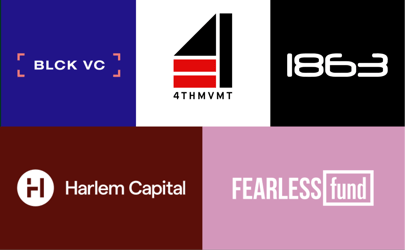In tight labor markets, finding, recruiting, and retaining the right employees becomes a significant challenge for most businesses. And right now, the market is unprecedentedly tight: More than 10 million jobs sit unfilled, and people are quitting at remarkable rates (consistently above 4 million monthly per the BLS).
In a market like this one, businesses are looking for any edge they can find to recruit new employees. One promising method is setting up an employee referral program. This approach is relatively easy to implement and offers numerous benefits, which we’ll cover below.
If your firm is considering implementing a referral program, this post has everything you need to know. We’ll cover four benefits of using this recruitment method, what the typical referral bonus looks like, and seven best practices for creating an employee referral program that stands out from the rest.
What Is an Employee Referral Program?
An employee referral program is an organized effort to attract new hires using direct recommendations from your existing staff members, usually with a reward or incentive for current employees each time they refer a candidate who is successfully hired. This recruitment strategy leverages your employees’ existing social and professional networks to attract well-qualified applicants who may not show up in the talent pool you’re building through other recruitment channels.
An employee referral program is certainly no replacement for a full-service white-glove recruiting service, but when used as one of many recruitment strategies, it can be a highly valuable source for new applicants.
Do Employee Referral Programs Really Work?
When set up and marketed properly, employee referral programs can make an outsized impact on an organization’s ability to fill open positions. These programs tend to produce higher quality candidates that are more qualified and less costly, and applicants tend to have a more favorable attitude toward your business than other candidates.
Benefits of Having an Employee Referral Program
Businesses that implement an effective employee referral process often enjoy the following benefits:
Lends to Self-Screening or Prequalification
First, the premise of an employee referral program lends itself to what we call self-screening. Put yourself in an imaginary employee’s shoes. Given the cash incentive, they want to participate in the program, so they scroll through the company’s current job openings and notice an accounting-related position in another division.
The employee isn’t likely to recommend just anyone they know in the field: They know that recommending a candidate who is obviously unfit or would become a problematic hire could negatively influence their own reputation at the company. So, the employee does some self-screening before making their referrals, recommending only those friends and contacts they believe will do a good job.
There’s no substitute for good HR practices and due diligence, of course. But for hiring managers, there’s a big difference between a referred candidate that your top performer enthusiastically recommends and a candidate with no history or context at all.
Increases Trust for the Referred Applicant
In saturated job markets, candidates tend to get bombarded with job posts — even when they aren’t looking for new work. It’s easy to become cynical about new opportunities, especially if the candidate has walked through complex interview processes before with nothing to show for it.
But a candidate who might scroll right past your job post trusts their friend. When your employees reach out to a friend, the prospective hire instantly gains a degree of trust in your business because they trust your employee — who likes their job well enough to recommend others.
You can’t buy that kind of trust, and an employee referral program delivers it for free.
Gives New Hires an Instant Point of Connection
Referred employees can be guaranteed to know — and usually like — at least one existing staff member, which gives them an instant point of connection. The first few months of any new job are stressful, and employee retention during this period can be challenging.
Having an anchor point or a friendly face nearby could make the difference and help you retain those new hires (and recoup the investment you’ve made in them). In fact, a large-scale study by Deloitte finds that three-year retention rates were higher among employee referral program hires (42%) than other popular methods, including job boards (32%) and career sites (14%).
Saves Money
It’s hard to imagine that paying employees to refer their friends would save money, but that’s exactly what happens. Glassdoor finds that average recruiting costs for the typical company are around $4,000 per new hire. And the more technical or complex your business and hiring process, the higher that cost per hire climbs.
Referred hires save a good chunk of that spend because they skip every last step in the “go out and find the candidate” piece of the hiring process.
The result? So long as your savings exceed your referral reward, you’ll spend less on hiring referrals than other applicants.
7 Best Practices for Creating an Effective Employee Referral Program
These benefits are worth pursuing, but to get the most out of your referral program, you’ll need to set it up in a usable, attractive, and effective way. These seven best practices are a great place to start.
1) Set Aside Time for Planning Your Program
First, realize that setting up a successful employee referral program takes some doing. Set aside some time and devote enough resources to the project so you can make sure to do it well.
2) Document Rules, Processes, and Rewards Before Rolling Out the Program
It doesn’t matter if you’re a startup or perhaps a small business with a casual company culture: Laying out all rules, processes, and rewards is a must. And make sure to document it tangibly; somewhere existing employees can access it.
Remember, you’re tying some sort of incentive, likely a cash bonus, to this program. You don’t want to argue about the maximum number of referrals or deal with someone trying to game the system.
We can’t catalog all the rules and processes that you must consider, but here are a few to get you started:
- Are there any limitations on your program in terms of social media (can employees just blast their referral link across LinkedIn, for example)?
- Are members of any departments ineligible (human resources and your existing recruiting team likely should be due to conflict of interest concerns)?
3) Market and Promote Your Referral Program to Team Members
An employee referral program can’t start generating qualified candidates until your current staff knows about the program, so be sure to market the program internally and promote it in internal communications from time to time.
On a related note, we recommend setting up an easy-to-use system so that employees aren’t discouraged by the complexity or time commitment of making a referral.
4) Get Creative With Your Rewards
Next, think creatively about the rewards you’ll offer. Cash bonuses are great (and so are gift cards), but they aren’t the only options. An extra (paid) day off could be highly motivating, and so could an off-site experience (whether it’s movie tickets or something higher-end).
You also might not want a flat, across-the-board reward structure. That’s because the further into talent acquisition (filling highly specialized roles) you go, the harder and more expensive the recruitment process becomes. An employee who refers a successful hire for a senior or highly technical role will have saved you significantly more money than with an entry-level referral hire. It’s reasonable to adjust the bonuses and rewards accordingly.
5) Track Referrals and Follow Up
Once the referrals start rolling in, your work has only just begun. Now it’s time to begin reviewing referral applications, contacting those referrals that haven’t yet applied, and incorporating referral applicants into your applicant review process.
Remember: These are especially attractive prospects in many cases, so don’t be afraid to follow up or add additional points of contact.
6) Review the Referral Program and Constantly Improve
Next, recognize that no referral program will be perfect in its first iteration. Plan to gather the team that formed your referral program at set intervals (quarterly or yearly) to review the program and make adjustments where necessary.
- Too few referrals: Evaluate incentive structure and the complexity of the process.
- Too many referrals (or poorly qualified ones): Reduce incentives or clarify program goals.
7) Always Provide Feedback to Your Team Members
Your team members may be more invested in their recommendations than you’d think, and hiring managers want to improve the relevance of future referrals. For these reasons, feedback to referring employees can be helpful. Your current team members may benefit from knowing why the company didn’t hire their friend or colleague.
What Is a Typical Referral Bonus?
Typical referral bonuses can range widely depending on the position level and the company's culture. Referral bonuses in entry-level retail may be $100 or lower, while executive search referrals may reach well into the five figures.
Leverage Referrals and Relationships With Hunt Club
An employee referral program is a good start, but many businesses today are discovering they need more than internal recommendations. They need expert help — beyond what their HR or recruiting team can deliver.
Hunt Club takes a multi-pronged approach to recruiting, combining powerful proprietary software and some of the most experienced recruiters in the business. The result is a deep roster of highly qualified, technically advanced candidates, including over 20,000 subject matter experts.
Hunt Club will be there for you when you’re ready to take your hiring and recruiting to the next level.






